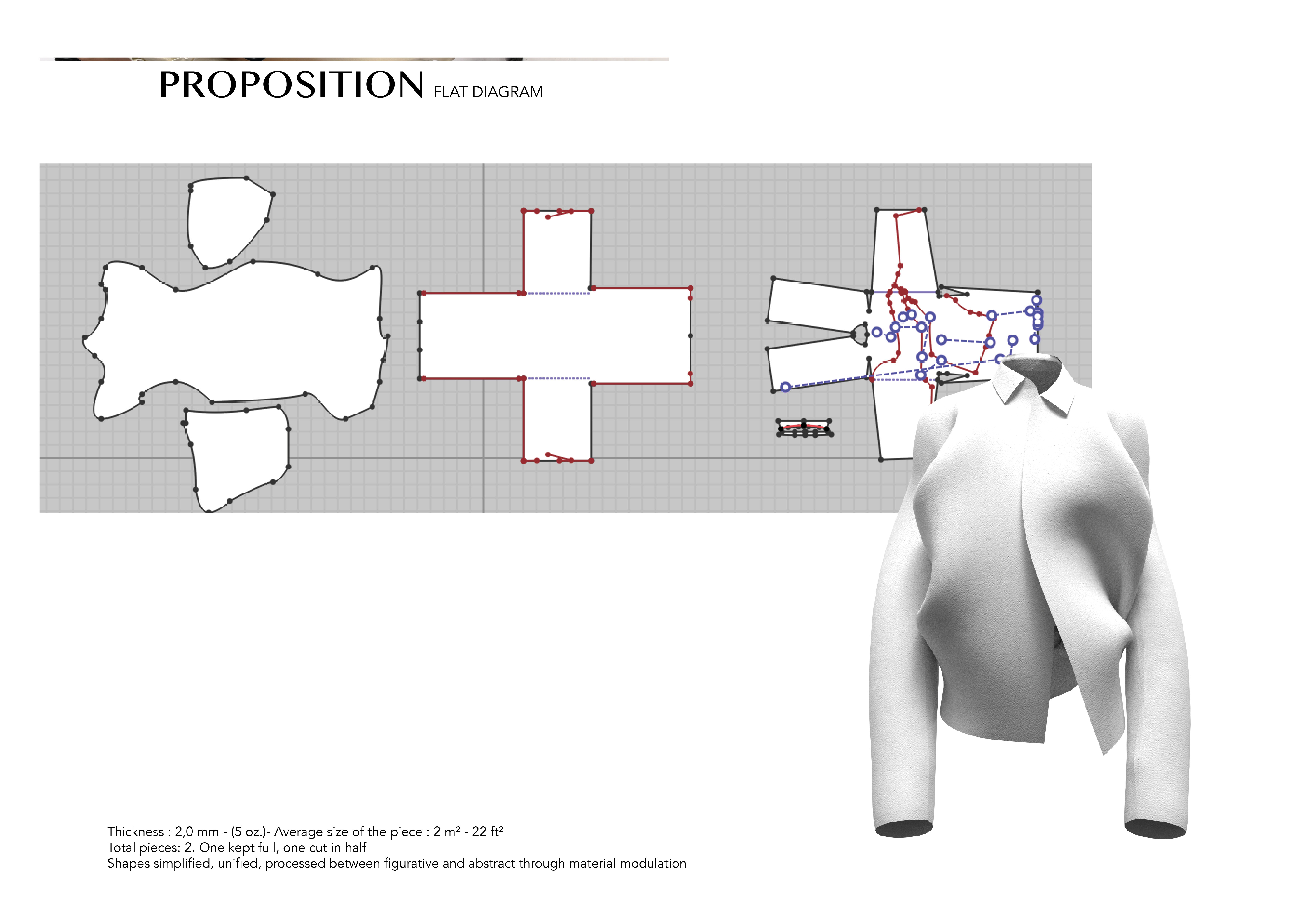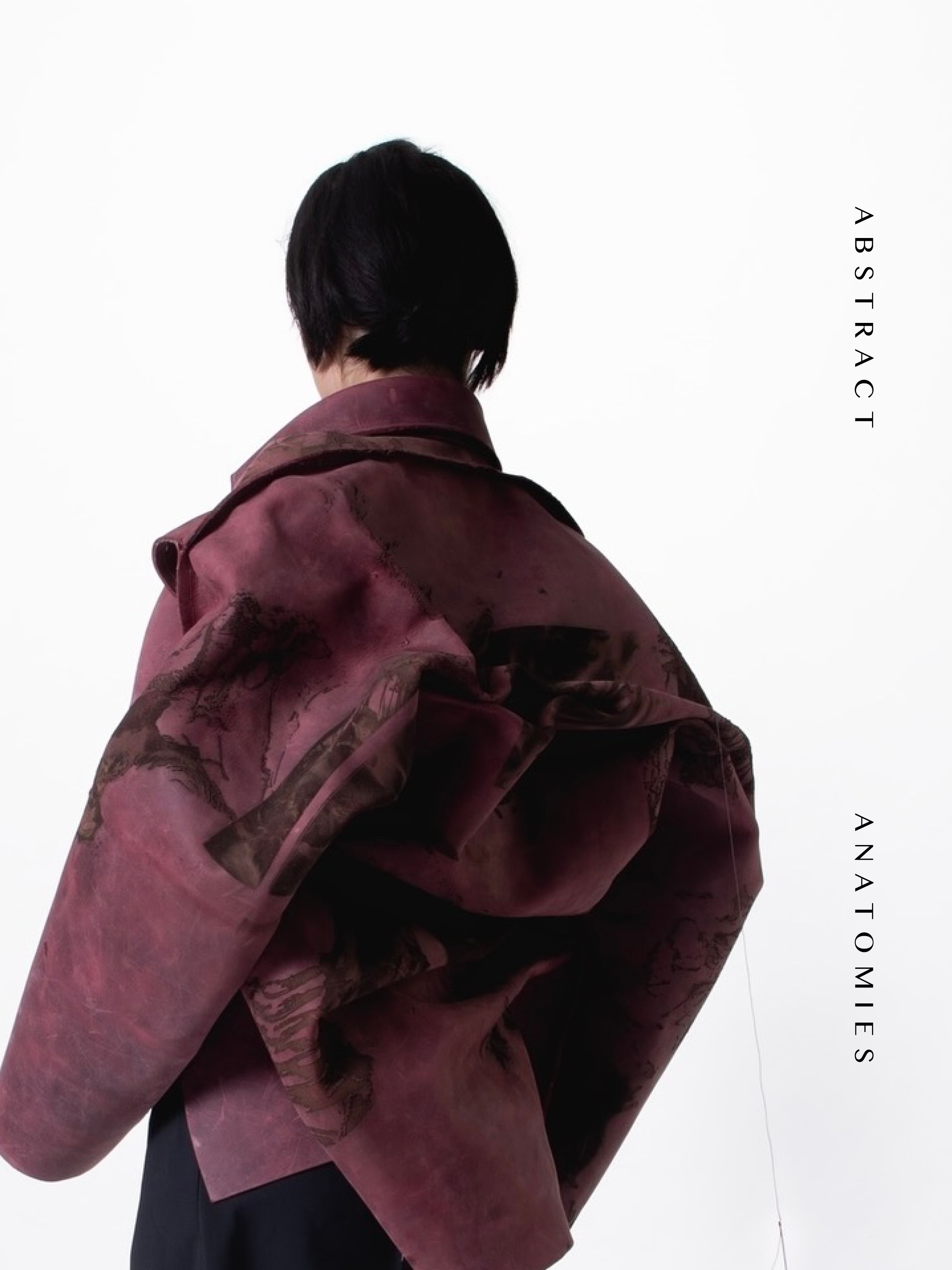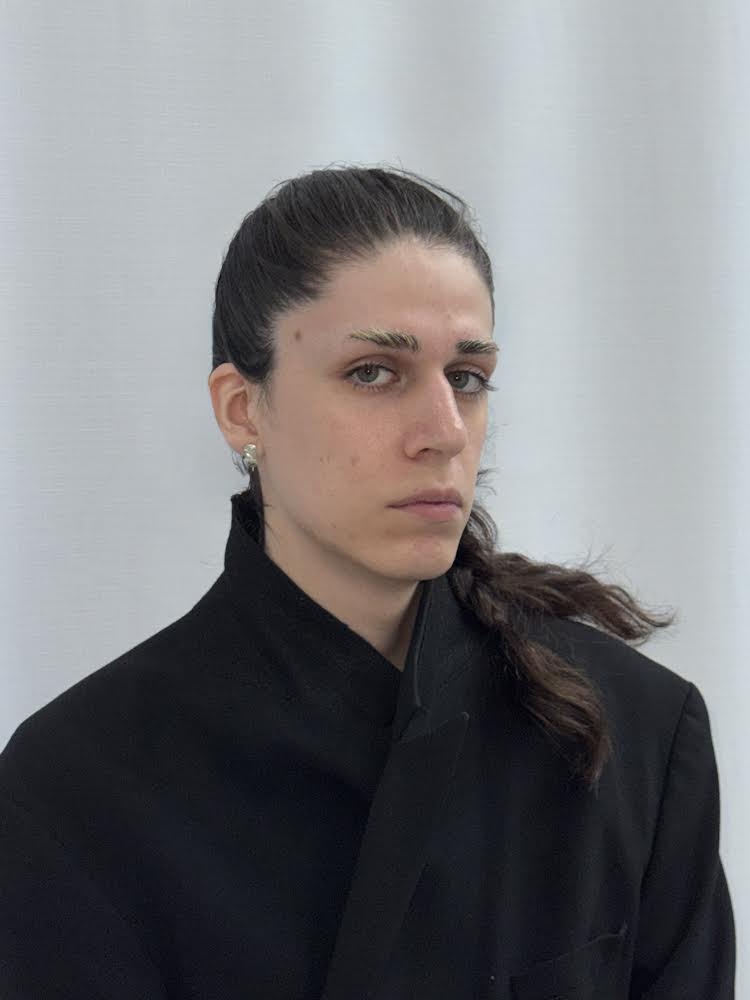Abstract Anatomies
Category: Apparel
This project proposes a radical rethinking of materiality in fashion by positioning leather not as passive fabric, but as an active modulator in the design process—one that co-authors form, gesture, and structure. It invites a conversation between body and object, natural and artificial, human and non-human, dissolving the traditional boundaries that define each. It all starts with the material itself: leather. Leather holds and expands shape, it contains a memory of the body of the animal it once dressed, and the signs and symbols that culturally have shaped its uses and aesthetics. Previously skin, the leather we wear acts as an animal prosthesis, an extension of our body made of other bodies. To approach this material with care and criticality, the leather is engraved with visual motifs that echo shared anatomical elements—hair, veins, muscles, birthmarks—evoking both human and animal traits. These engravings do more than mark the surface: they activate the material, altering its thickness, elasticity, and behavior. As the leather responds, it generates new forms through collapse, tension, and weight, creating silhouettes not imposed by the designer, but co-formed with the material itself. Design emerges from material agency. In this system, the garment’s anatomy is not cut and shaped, but rather draped and collapsed, honoring the integrity of the leather. No material is discarded during the process, apart from the initial trimming of the hide into rectangles to establish a rough starting point. Even these remnants are later reincorporated as structural or decorative details, emphasizing a zero-waste ethic and a circular logic of design. The construction process itself becomes a dialogue: between designer and material, intention and intuition, structure and abstraction. Garment features—such as necklines or sleeves—are formed through subtle negotiations between figurative archetypes and material-led distortion. Instead of forcing the leather to conform, the designer follows its movements, allowing the material to suggest where seams fall and volume emerges. The pieces are joined using saddle stitching, reinforcing the crafted nature of each interaction. Finally, the original trimmed pieces are reintroduced to “ground” the garment, providing recognizable fashion cues that guide interpretation—collars, closures, or functional seams—inviting the wearer to engage with both the familiar and the unfamiliar. The result is a hybrid object: part garment, part sculpture; both intuitive and conceptual; a dialogue between abstraction and archetype, collapse and control. This project ultimately challenges the human-centric narratives of fashion by embracing posthuman design practices, where materials are collaborators, not tools—and where form is discovered, not dictated. While the final product shown is proposed more as a showpiece, the methodologies proposed can easily be applied in less dramatic manner, producing small drapes and expressions into more simple or archetypical garments.



 Copy URL
Copy URL
 Login to Like
Login to Like 
